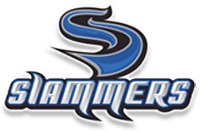Understand Recruiting Rules
How early recruiting works in baseball
While the NCAA baseball recruiting rules and calendar dictate when and how athletes can be contacted by college coaches, recruits still get offers as underclassmen. In a recent NCAA study, 46% of DI prospects reported having their first recruiting contact with a DI coach before their junior year. If the NCAA recruiting rules prohibit a college coach from contacting a recruit before their junior year, how can coaches extend an offer before then? In these cases, a college coach will most likely have worked with a recruit’s travel or high school coach. Because athletes can contact a college coach any time, the athlete’s current coach will set up a time for the athlete to call the college coach.
NCAA Division 1 baseball recruiting rules
The NCAA baseball recruiting rules for Division 1 schools are the most regulated and strict of the college division levels. Specific forms of communication from coaches are allowed depending on your year in high school.
September 1 of junior year
- This is when college coaches can begin sending all forms of communications to student-athletes, ranging from emails and texts to direct messages on social media and phone calls
- Student-athletes and their parents can begin taking official visits. Per NCAA rules, athletes can take no more than five official visits to D1 schools. Only one official visit is allowed per school.
- Athletes can coordinate unofficial visits with a school’s athletic department to meet and have recruiting conversations with the coach, coaching staff, and players while on campus.
July 1 before senior year
- This is when college coaches can begin making off-campus visits to student-athletes at their home or school.
Senior year
- College coaches can conduct off-campus communications with athletes and their parents. Keep in mind this can happen no more than three times.
NCAA Division 2 baseball recruiting rules
NCAA baseball recruiting rules for Division 2 schools are less restrictive than those for Division 1 schools. Coach communication, off-campus contact and official visits can begin June 15 after sophomore year.
- General materials: Athletes can get all types of communications including camp brochures, questionnaires, NCAA materials and non-athletic recruiting publications at any time.
- Printed recruiting materials: Starting June 15 before an athlete’s junior year, coaches can begin mailing out printed recruiting materials like camp brochures, questionnaires, or general school brochures available to all students at any time.
- Telephone calls: Starting June 15 prior to the athlete’s junior year, coaches can begin calling, using Facetime, Skype or any type of video conferencing with athletes.
- Off-campus contact: College coaches can have off-campus communications with athletes and/or their parents starting June 15 prior to the athlete’s junior year.
- Official visits: Athletes may start taking official visits starting June 15 prior to their junior year.
NCAA Division 3 baseball recruiting rules
In comparison to Division 1 and Division 2 schools, Division 3 schools have the most relaxed NCAA baseball recruiting rules.
- Student-athletes can get recruiting materials at any time.
- College coaches are allowed to make unlimited calls to student-athletes.
- College coaches may start off-campus communications after an athlete’s sophomore year.
- Unofficial visits are not limited. Athletes and their parents can make as many as they want.
- After Jan. 1 of junior year: Athletes can begin taking official visits.
NAIA baseball recruiting rules
Unlike the NCAA, the NAIA does not regulate or limit the contact and communication between a coach and a current high school athlete, nor does it regulate campus visits and tryouts.
Junior college baseball recruiting rules
Junior college coaches are free to contact prospective student-athletes at any time provided they have not signed a junior college letter of intent. There is no baseball recruiting calendar.
- No institution shall permit an athlete to be solicited to attend by the promise of a gift or other inducement other than an athletic grant-in-aid.
- An institution may pay for one visit to its campus by direct route, for a stay not to exceed two days and two nights. The paid visit must be limited to the campus and local community where the college is located. A student-athlete must have completed their high school junior year to receive an official recruiting visit by a member college.
- A college representative may purchase meals for a potential athlete while recruiting on campus.
